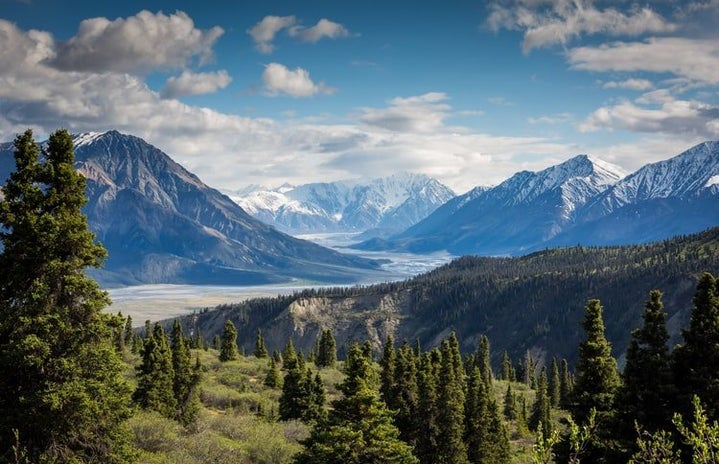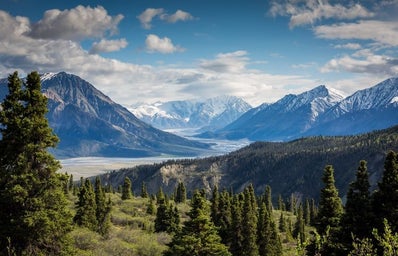Part 4 of the series taking you through a small piece of Canadian history in each province and territory.
Over 1,150 years ago, on the Alaska-Yukon border, Mount Churchill erupted, spewing volcanic ash across the continent. On the Eastern side of the mountain sat Yukon’s White River, which is known today for the ash deposit left there by the massive eruption.
Mount Churchill sits 5,000 m tall and is situated only 2 km away from Mount Bona, and together they make up one big volcano. There have only been two known eruptions in history at this site, the first taking place around 150-500CE, and the second in 850CE. If the thought of a volcano erupting twice isn’t scary enough, scientists believe that the second eruption might have been five times the size of the first. Yikes!
This explosion was so massive, that at the time of the incident, geologists estimate that areas of Yukon may have become covered in layers of ash up to a meter thick. The size of this giant cloud of ash would have been around 250,000 square km upon its explosion, covering the sky as far as the eye can see.
Today, ash can be found thousands of kilometers away from the volcano itself – up to 7,000 km away, to be exact – as a result of the eruption. For years, researchers and geologists have found trace amounts of the White River Ash from Mount Churchill in Germany, in bogs in Ireland, all over the province of British Columbia, as well as in Newfoundland. However, it wasn’t until the 1990s that scientists put two and two together, recognizing that it belonged to Mount Churchill.
Mount Churchill’s explosion was huge. But, it pales in comparison to some of the other volcanic eruptions we know about. For example, scientists predict that Mount Churchill’s White River eruption was likely only one third of the size of the 1815 Mount Tambora explosion in Indonesia. This explosion was the deadliest of the 19th century, killing over 70,000 people. It’s estimated that Mount Churchill’s explosion is the fourth largest in the last 2,000 years. Obviously, it’s not nearly as major as the famous Mount Vesuvius eruption in Pompeii!

On top of the widespread volcanic ash deposits caused by Mount Churchill’s eruption, any plant or animal life in the area would have been destroyed. Even today, trees surrounding the mountain are still stumps, covered in ash. Not only would the animals on land be affected – but the ash that coated the rivers would have affected any marine life that had previously been thriving, too.
Animals weren’t the only living things in the area at the time of the eruption. Indigenous peoples living in both Yukon and Alaska were affected by this natural disaster, too. In some Indigenous groups, such as the Athabascan people, oral tradition and stories passed down through generations describe a volcanic eruption, which is believed to be Mount Churchill. While history isn’t able to accurately understand the extent that Indigenous people were affected, it’s thought that many communities had to flee the area, finding themselves along the coast of Alaska, moving down into British Columbia, and some even going as far as the southwestern United States.
Many descendants of the Indigenous peoples impacted by the volcano (that is, those who called Mount Churchill area home thousands of years ago) still live nearby today, in Yukon and the North West Territories.
The eruption of Mount Churchill is a geological event that we don’t often talk about. It’s a piece of history that not many Canadians know about. Considering the massive impact of the eruption on the surrounding wildlife and people, you’d think it would be more widely known. In any case, it’s not every day that a natural disaster of this scale happens in Canada – super interesting, right?



